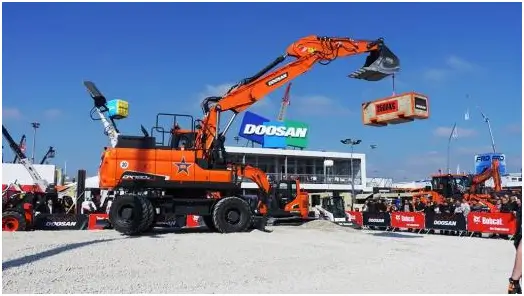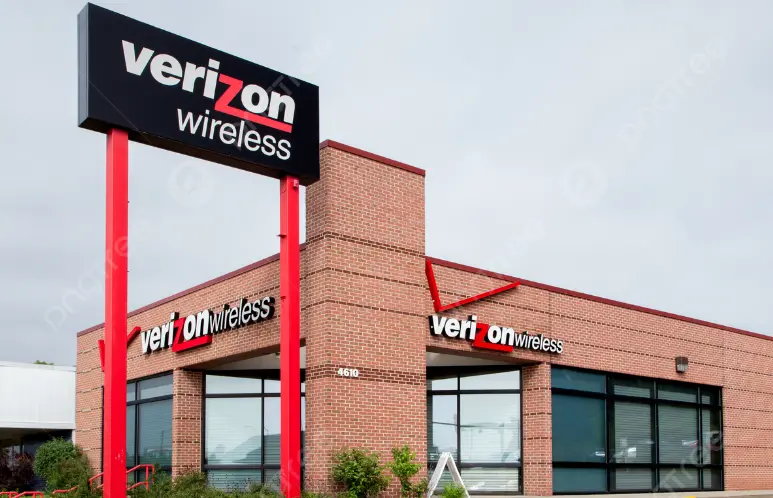Introduction
Why Cobots Are the Future of Automation
Imagine a future where humans and robots work side-by-side—no cages, no barriers, just smooth, intelligent collaboration. That future is no longer sci-fi—it’s today’s reality thanks to collaborative robots (cobots). Unlike traditional robots that operate in isolation, cobots are designed to assist humans in a shared workspace. They’re smart, safe, and adaptable—qualities that make them ideal for small and medium-sized businesses as well as large industrial setups.
As global industries push toward smart manufacturing, cobots are emerging as the core enablers of automation. With the rise of the Internet of Things (IoT), AI, and lean production models, cobots fill the crucial gap between full automation and human flexibility.
And leading this transformation in Asia—and increasingly, around the world—is Doosan Robotics, a division of the massive Doosan Group.
Doosan Group’s Evolution into High-Tech Manufacturing
Doosan Group, one of South Korea’s oldest and most diversified conglomerates, has long been a powerhouse in industries like heavy machinery, power generation, and construction. But in recent years, Doosan has shifted gears—diversifying into tech-driven fields such as robotics, hydrogen fuel cells, and digital manufacturing.
The launch of Doosan Robotics in 2015 signaled a clear intent: to become a global leader in next-gen automation. Rather than play catch-up, Doosan leveraged its industrial expertise, global network, and R&D capabilities to leapfrog into the forefront of collaborative robotics.
Overview of Doosan Group
History and Origins
Founded in 1896, Doosan Group began as a retail business in Seoul. Over more than a century, it evolved into a multinational conglomerate with interests spanning construction, power plants, engines, defense systems, and now, high-tech innovation.
Here’s a snapshot of Doosan’s growth trajectory:
- Early 1900s: Diversification into brewing and consumer goods.
- Mid-1900s: Expansion into industrial machinery and construction.
- 2000s: Global acquisitions in engineering and power sectors.
- 2010s–Present: Strategic focus on smart technology, robotics, and green energy.
Today, Doosan operates in over 38 countries with tens of thousands of employees. Its pivot into automation was not just strategic—it was necessary to remain competitive in a digitizing world.
Business Segments and Global Presence
Doosan Group operates through various subsidiaries and divisions, including:
- Doosan Enerbility (formerly Doosan Heavy Industries)
- Doosan Bobcat (construction equipment)
- Doosan Fuel Cell (clean energy)
- Doosan Robotics (automation)
With over 100 global subsidiaries, Doosan serves clients in power generation, construction, aerospace, defense, and now, robotics. This global reach gives Doosan Robotics a major edge in deploying cobots at scale across industries.
Birth of Doosan Robotics
Founding Vision and Initial Strategy
Doosan Robotics was founded in 2015 with a clear mission: to become the top Asian manufacturer of collaborative robots and compete globally. Backed by Doosan Group’s robust capital and engineering know-how, the new division quickly made waves in the automation space.
The strategy wasn’t to copy competitors—it was to build cobots that were smarter, safer, and more user-friendly than anything currently available. In 2017, just two years after its inception, Doosan Robotics launched its first M-Series cobots with some of the highest payloads and reach in the industry.
Key aspects of their founding strategy included:
- Focusing on safety without compromising power
- Creating intuitive interfaces for non-expert users
- Offering modular designs for versatile deployment
- Investing heavily in AI and motion control R&D
This early vision laid the groundwork for what would become a world-class robotics brand.
Positioning Within the Doosan Conglomerate
Unlike other tech ventures that operate independently, Doosan Robotics is deeply integrated within the Doosan ecosystem. This provides unique benefits:
- Access to industrial clients across Doosan’s other divisions
- Support from Doosan’s R&D hubs and manufacturing facilities
- Capital investment for rapid scaling and global expansion
This synergy enables Doosan Robotics to bring advanced solutions to market faster and scale manufacturing without bottlenecks.
Doosan Group also views robotics as a pillar of its long-term digital transformation strategy, with Robotics being a core segment for future investments alongside clean energy and AI.
Understanding Collaborative Robots (Cobots)
What Are Cobots and How Are They Different?
Collaborative robots, or cobots, are designed to work directly alongside humans without the need for safety cages or complex programming. This makes them drastically more flexible and cost-effective than traditional industrial robots.
Key characteristics of cobots include:
- Built-in force sensors to detect human presence
- Lightweight and portable designs
- User-friendly software interfaces
- Adaptability across tasks like welding, inspection, palletizing, and assembly
Because cobots are easier to deploy and reprogram, they’re ideal for industries that demand customization, speed, and agility.
Market Demand and Use Cases
The global market for cobots has exploded over the past five years, driven by:
- Rising labor costs
- Demand for flexible manufacturing
- Safety regulations
- Industry 4.0 adoption
Cobots are now widely used in:
- Electronics manufacturing for precision tasks
- Automotive assembly lines
- Food and beverage packaging
- Medical device handling
- Warehouse automation
This growing demand aligns perfectly with Doosan Robotics’ core product strengths—precision, safety, and intuitive operation.
Product Portfolio of Doosan Robotics
M-Series and A-Series Cobots
Doosan Robotics has developed two primary cobot lines:
M-Series (Flagship Line):
- Payload: Up to 15 kg
- Reach: Up to 1700 mm
- Applications: Welding, machining, heavy lifting, industrial inspection
- Key Tech: High-resolution torque sensors in every joint, enabling ultra-sensitive control
A-Series (Affordable Line):
- Focus: High-performance at a lower price point
- Ideal For: SMEs and automation beginners
- Applications: Pick & place, packing, quality inspection
- Feature: Faster speeds with lighter frame
Both series are compatible with Doosan’s intuitive software interface, making them accessible even for users without robotic engineering experience.
Key Features and Tech Differentiators
What makes Doosan cobots stand out?
- 6-axis flexibility for complex movements
- Power and force limiting (PFL) for unmatched safety
- Vision systems with integrated cameras
- Plug & play tools including grippers and welding kits
- Advanced AI modules for predictive control
In short, Doosan offers not just robots—but ready-to-deploy automation solutions tailored for real-world challenges.
ndustries Powered by Doosan Robotics
Electronics and Semiconductors
The electronics industry demands precision, speed, and repeatability—qualities that Doosan’s cobots deliver in spades. In semiconductor manufacturing, where tolerances are measured in microns, the M-Series cobots shine. They are frequently deployed for tasks such as:
- PCB loading and unloading
- Micro-assembly
- Soldering and screwdriving
- Optical inspection and testing
Cobots eliminate the human error factor in these ultra-sensitive processes, significantly improving yield rates. With their compact footprint and smooth movements, they easily fit into cleanroom environments, a must for electronics manufacturing.
In countries like South Korea, Taiwan, and China—hotspots for chip and electronics fabrication—Doosan Robotics has become a key player by offering ready-to-integrate systems tailored to this industry’s needs.
Automotive and Heavy Industry
Few sectors demand robust automation like the automotive industry. From welding frames to assembling dashboards and installing door seals, cobots offer a flexible, scalable solution for car manufacturers. Doosan cobots are particularly valuable in tier-1 and tier-2 supplier facilities, where automation is essential but traditional robotics may be too expensive or rigid.
Applications include:
- Arc and spot welding
- Bolting and torque operations
- Engine and transmission assembly
- Surface inspection and sensor integration
Doosan’s cobots are prized in this sector for their durability and adaptability. Their ability to work around humans means factories can be restructured for maximum efficiency without costly safety barriers or layout overhauls.
Healthcare and Food Industries
Two rapidly growing fields for cobot deployment are healthcare and food & beverage. In healthcare, cobots assist with:
- Lab automation (specimen handling, labeling)
- Pharmacy operations (dispensing, sorting)
- Equipment sterilization and packaging
Their hygienic build, quiet motors, and precise movement make them ideal for use in clinical and pharmaceutical settings.
In the food sector, Doosan cobots are used in:
- Automated packaging and palletizing
- Cutting and portioning tasks
- Sorting and tray handling
- Quality control with AI-assisted vision systems
Doosan Robotics has focused on IP65-rated units that can withstand washdowns, making them perfect for F&B manufacturing where sanitation is critical. Their cobots also comply with global safety standards like ISO 10218-1 and ISO/TS 15066, ensuring top-tier operational safety in sensitive environments.
Global Expansion Strategy
Entry into U.S., Europe, and Southeast Asia
Doosan Robotics began in South Korea, but its ambitions have always been global. The company strategically entered the U.S. market by participating in key industrial expos like Automate and CES and forming distribution alliances in California, Texas, and New York.
Its European expansion has been similarly aggressive. By partnering with leading automation integrators in Germany, France, and Italy, Doosan has made inroads into some of the world’s most demanding industrial environments. The cobots are particularly attractive to European manufacturers due to their intuitive UIs and high safety ratings.
In Southeast Asia, Doosan has targeted manufacturing hubs like Vietnam, Thailand, and Malaysia. These countries have booming SME sectors and government-driven initiatives supporting automation, making them fertile ground for affordable, high-performance cobots like the A-Series.
Key moves in their expansion strategy include:
- Opening local support centers
- Offering multi-language tech support
- Establishing demo labs and training centers
- Localizing software to regional standards
This boots-on-the-ground approach has helped Doosan compete with entrenched players like Universal Robots and ABB.
Strategic Partnerships and OEM Collaborations
Doosan’s growth isn’t just about exporting hardware—it’s about building ecosystems. The company has partnered with system integrators, OEMs, and software developers to create end-to-end solutions that cater to specific industries.
Notable collaborations include:
- Robotis for servo and actuator integration
- Schunk and Robotiq for end-of-arm tooling compatibility
- NVIDIA and Intel for AI and edge processing units
- Rockwell Automation for smart factory integration
By working closely with these partners, Doosan ensures that its cobots can plug seamlessly into any industrial automation environment. Their cobots are also ROS (Robot Operating System) compatible, making them easy to adopt in R&D and university settings.
OEM collaboration has allowed Doosan to deploy custom cobots built for unique applications, such as:
- Cobot-powered coffee baristas (in Korean cafés)
- Fully automated pick-and-place systems for PCB fabrication
- Surgical-assist robots in prototype testing stages
These partnerships are a core reason Doosan is not just surviving—but thriving—in the competitive global robotics market.
Financial Performance and Market Share
Revenue Growth and Key Markets
Doosan Robotics has seen explosive growth since 2020, fueled by the pandemic-induced surge in automation demand and reshoring of manufacturing. In 2023 alone, the company reportedly crossed over KRW 100 billion (approx. USD 76 million) in revenue—a massive leap from its earlier years.
Key revenue contributors include:
- Electronics sector (30% share)
- Automotive industry (25% share)
- F&B and logistics (15%)
- Education and research sales (10%)
- Custom/OEM projects (20%)
South Korea remains its largest market, but international sales now account for nearly 40% of revenue, with North America and Europe leading the charge.
Investors and analysts see Doosan Robotics as a unicorn in the making, especially after it was spun off for greater autonomy and rumored to be preparing for a future IPO.
Cobot Market Positioning Globally
Doosan is now widely considered the leading cobot manufacturer in Asia and among the top five globally. It competes with:
- Universal Robots (Denmark)
- FANUC and Kawasaki (Japan)
- ABB Robotics (Switzerland)
- Techman Robot (Taiwan)
However, Doosan distinguishes itself by:
- Offering the highest torque sensing in the industry
- Providing advanced user interfaces even for non-technical users
- Delivering more flexible deployment options than traditional industrial robot providers
Its market share in cobots is growing, and Doosan has publicly stated its target to become the No. 1 cobot supplier worldwide by 2030.
Technology Behind Doosan Cobots
AI Integration and Vision Systems
Doosan cobots are not just programmable arms—they’re intelligent collaborators. With deep learning modules and vision AI, these robots can:
- Recognize parts and adjust grip patterns
- Detect anomalies in quality inspection
- Optimize movement paths using past task data
The robots integrate with AI-based software that allows adaptive behavior, making them increasingly valuable in dynamic environments like electronics assembly lines.
Doosan’s DART platform enables plug-and-play AI deployment across all cobot models. This platform supports third-party apps and vision modules, allowing customers to scale features as needed.
Safety and Human-Robot Collaboration Protocols
Safety is the backbone of any collaborative system. Doosan cobots come with:
- Torque sensors in all joints
- Collision detection algorithms
- Speed and separation monitoring
- Fail-safe shutdowns
They meet ISO 13849-1 PLd and ISO/TS 15066 standards, and their movements are so finely tuned that they can pour coffee, handle glass, or thread delicate screws—tasks that require both strength and finesse.
Doosan has also developed safety simulators to help users visualize and test robot behavior before deploying in real-world settings. This minimizes risks and improves ROI.
Doosan Robotics vs. Global Competitors
Comparison with Universal Robots, FANUC, and ABB
Doosan Robotics stands tall in a competitive landscape, but how does it stack up against some of the world’s biggest automation names?
Let’s break it down:
| Feature / Brand | Doosan Robotics | Universal Robots | FANUC | ABB Robotics |
|---|---|---|---|---|
| Country of Origin | South Korea | Denmark | Japan | Switzerland |
| Max Payload | Up to 25 kg | Up to 16 kg | Up to 35 kg | Up to 10 kg |
| Reach Range | Up to 1.7 m | Up to 1.3 m | Wide range | Up to 1.2 m |
| AI Integration | Strong (DART AI) | Moderate | Limited | High-end systems |
| UI/UX Ease | Highly Intuitive | Easy | Technical | Complex |
| Safety Features | Industry-leading | High | Standard | High |
| Industry Focus | General + Heavy Duty | Light Industry | Automotive | Multi-sector |
Doosan clearly shines in areas like payload strength, reach, and safety control, particularly appealing to industries requiring more robust, heavy-duty cobots.
Where Universal Robots dominates in volume and brand recognition, Doosan is building its strength on technical performance and enterprise-grade customization. It’s the go-to choice for companies who demand precision + power in one system.
What Makes Doosan Stand Out?
- Torque Sensors in All Joints: This is a game-changer, providing unmatched precision and safety.
- Industrial Aesthetic + Functionality: Designed for performance and endurance.
- Plug-and-Play Software (DART Platform): Minimal learning curve, making deployment fast and efficient.
- Global Service Network: Thanks to Doosan Group’s global presence, customers enjoy faster parts, support, and training wherever they are.
In short, Doosan is winning by combining world-class engineering with real-world usability, setting itself apart from the competition in one of the fastest-growing niches in robotics.
Role Within Doosan Group’s Future Strategy
Robotics as a Core Growth Driver
Robotics isn’t a side hustle for Doosan—it’s central to the conglomerate’s future vision. As traditional revenue drivers like power and construction face environmental and technological disruption, Doosan is aggressively reshaping its portfolio around future-ready technologies.
Robotics sits at the intersection of:
- Smart factories
- AI-driven automation
- Global labor shortages
- Decarbonization efforts
It’s no surprise that Doosan Group continues to invest millions in robotics R&D, expand global cobot partnerships, and integrate cobot workflows into its own operations—from manufacturing to logistics.
Their long-term goal? To make Doosan Robotics not just the No.1 cobot company in Asia, but the gold standard for collaborative automation worldwide.
Alignment with Smart Factory and ESG Goals
As industries move toward ESG (Environmental, Social, Governance) compliance, Doosan’s cobots offer a practical solution. They:
- Reduce energy waste via optimized workflows
- Improve workplace safety, decreasing human injury risks
- Empower smaller factories to compete globally with automation
Doosan’s cobots are being integrated into “Smart Factory” solutions promoted by governments in Korea, Europe, and Southeast Asia. These robots act as foundational components for data-driven, cloud-connected manufacturing environments.
That means more demand, more relevance, and more sustainability, putting Doosan Robotics right in the center of modern industrial evolution.
Awards, Recognition, and Innovation
Notable Patents and Technological Milestones
Doosan Robotics isn’t just deploying tech—it’s creating it. Since its inception, the company has filed over 250 patents related to:
- Torque sensing and feedback systems
- Motion planning algorithms
- Vision-guided navigation
- Modular arm architectures
These patents demonstrate Doosan’s commitment to proprietary innovation, rather than just repackaging existing robotics systems.
In 2023, they introduced the H-Series, a next-gen lineup that pushes the limits in terms of payload, joint torque, and AI-enhanced sensing.
Industry Awards and Media Coverage
Doosan Robotics has been recognized globally for excellence in design, innovation, and market impact:
- 🏆 Red Dot Design Award (Product Design)
- 🏆 CES Innovation Awards (Robotics)
- 🏆 Korea Tech Grand Prize
- 🏆 Automation Expo Best Innovation Award
Media coverage from TechCrunch, IEEE Spectrum, and The Korea Herald consistently highlights Doosan as a rising star in the global automation space.
Their robots have even gone viral online—like the barista robot serving lattes in Seoul, or the cobot-powered auto repair demos showcased at international expos.
Customer Success Stories
Case Studies from Global Installations
Doosan Robotics has deployed cobots across industries and continents with impressive results. Let’s look at a few examples:
📍 Automotive Parts Maker (Germany)
Challenge: Improve bolt fastening consistency
Solution: Doosan M1013 installed for torque-controlled fastening
Result: 27% reduction in QA errors, 35% increase in cycle speed
📍 Electronics Factory (Vietnam)
Challenge: Labor shortage on PCB line
Solution: A-Series cobots deployed for pick-and-place
Result: ROI achieved in 8 months; continuous operation without downtime
📍 Korean Café Chain
Challenge: Attract footfall with tech and improve service time
Solution: M0609 used for coffee brewing and delivery
Result: 30% customer increase + viral marketing value
Feedback from Industry Professionals
Engineers and managers praise Doosan for:
- Easy programming for non-coders
- Reliability over long shifts
- Real-time support from the company
- Adaptability to dynamic work environments
One manufacturing plant manager said: “With Doosan, we’ve automated tasks we thought only humans could do—without compromising safety or quality.”
Future Roadmap of Doosan Robotics
Upcoming Product Launches
Doosan has already teased the development of:
- Dual-arm cobots for complex handling tasks
- Cobots with built-in mobile platforms (AMRs)
- AI-powered smart grippers with adaptive fingers
- Fully modular cobot kits for educational institutes
They’re also developing a cloud-based fleet management system for companies using multiple cobots across multiple sites—bringing efficiency to multi-unit deployment.
Expansion into AI, Edge Computing, and IoT
Doosan’s future is digital.
They’re investing heavily in:
- Edge AI chips for onboard learning
- IoT connectivity for remote diagnostics and upgrades
- Cloud platforms to unify data from sensors, cameras, and PLCs
These advancements will make Doosan cobots not just tools—but intelligent team members in smart factories.
Conclusion
Doosan Robotics has come a long way from its 2015 debut. In less than a decade, it has transformed from a newcomer to a global leader—armed with cutting-edge cobots, visionary leadership, and the full backing of Doosan Group.
What sets Doosan apart is not just its technology, but its commitment to real-world solutions. From Korean cafés to European car plants, Doosan cobots are reshaping how work gets done—safely, efficiently, and intelligently.
As the world embraces automation and smart manufacturing, Doosan Robotics is perfectly positioned to lead. Whether you’re a business owner looking to automate, an engineer seeking performance, or an investor chasing the future—keep your eyes on Doosan.
FAQs
What are the main applications of Doosan Robotics?
Doosan cobots are used in welding, assembly, inspection, packaging, lab automation, and even customer-facing roles like food preparation and service.
How do Doosan cobots compare with others?
They offer industry-leading torque sensing, advanced safety, high payloads, and extremely user-friendly interfaces—competing with and often surpassing brands like Universal Robots and FANUC.
Is Doosan Robotics publicly traded?
Currently, Doosan Robotics is a subsidiary of Doosan Group. However, there are rumors and expectations about a future IPO as the division continues rapid growth.
Where can I buy or demo Doosan robots?
You can purchase through authorized distributors or visit Doosan’s regional demo centers across the U.S., Europe, and Asia. Contact Doosan Robotics via their official website for consultations.
What makes Doosan Group invest heavily in robotics?
With the future leaning toward smart, sustainable, and efficient production, robotics is one of Doosan Group’s three strategic pillars—alongside clean energy and digital transformation.







